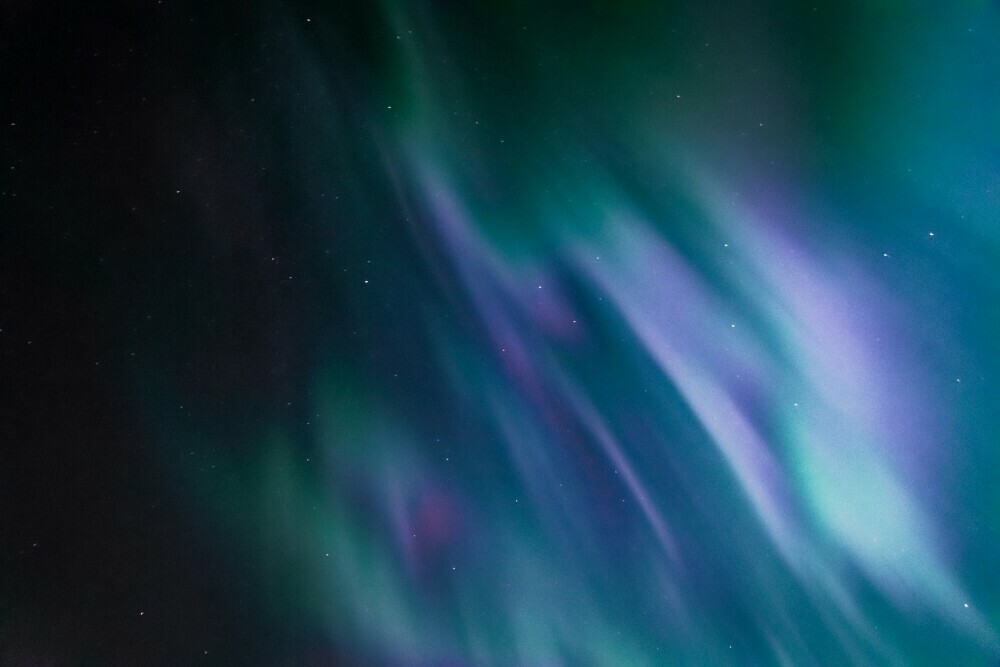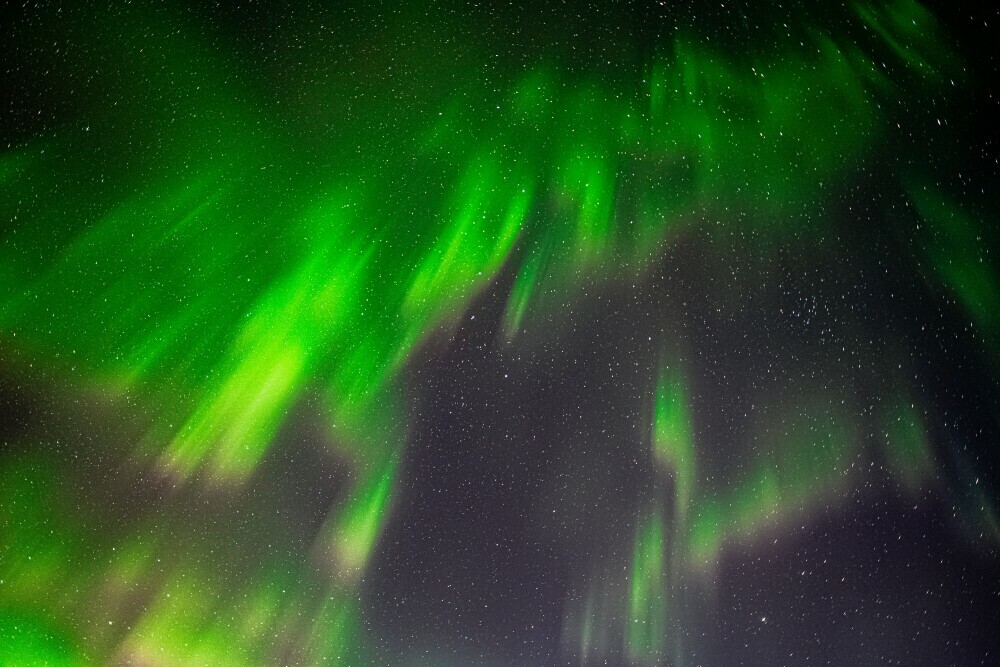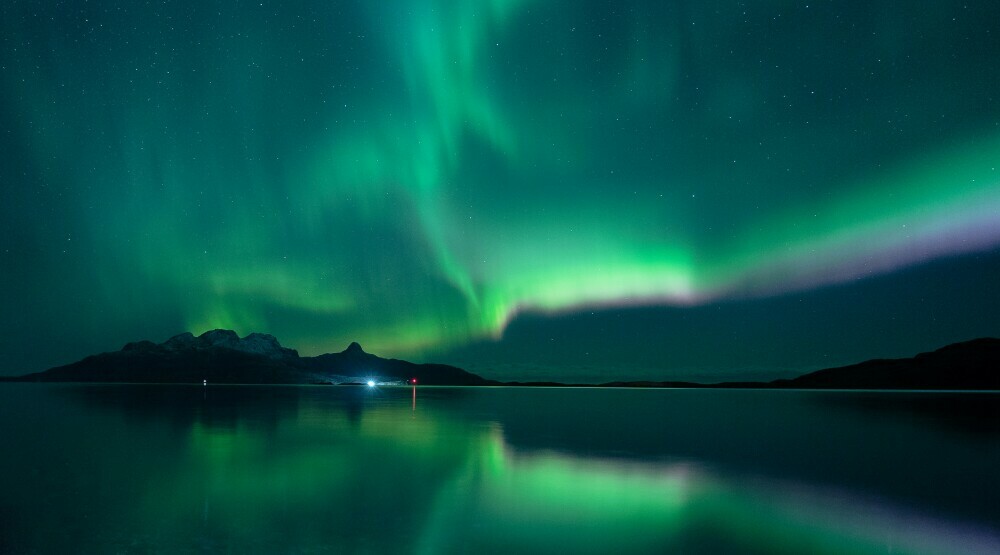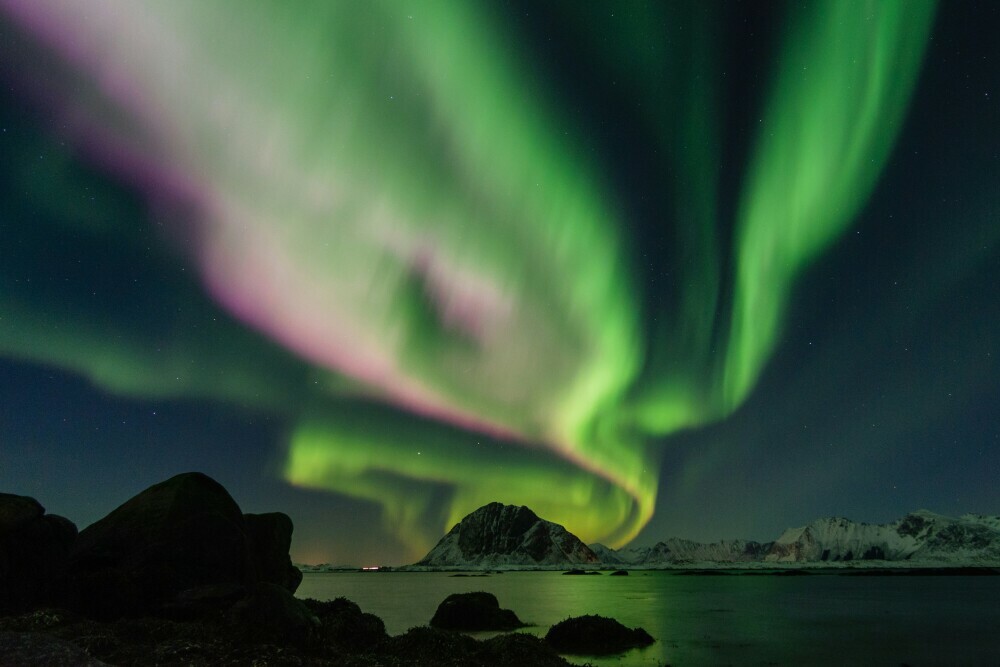 Chong Wei. (2021). Elk Island, Canada [Photograph]. Unsplash.
Chong Wei. (2021). Elk Island, Canada [Photograph]. Unsplash.
Imagine the night sky, a canvas painted with surreal colors, a spectacle that could only be described as otherworldly. The Aurora Borealis is a natural marvel known as the Northern Lights. It’s not just a treat for the eyes but a cosmic testimony to the intricate dance between our planet and the Sun, which has captivated scientists and enthusiasts for centuries.
Solar activity, the Sun’s dynamic and sometimes turbulent nature, powers this celestial spectacle. Everything from solar flares to coronal mass ejections is crucial in lighting the Earth’s polar skies. But it’s not just about the beauty of the Auroras. Understanding the connections between these solar events and the resulting Auroras is essential for appreciating their beauty and broader implications on our technologically dependent world. It’s about being enlightened and informed about the world around us.
At the heart of this incredible display is the interplay between the Sun’s fierce behavior and the Earth’s protective shield, the magnetosphere. This delicate balance, honed over millennia, allows the Earth to transform the Sun’s violent outbursts into a silent light show. Let’s delve into this remarkable process and understand how our planet turns potential solar danger into a spectacle of light.
Unraveling the Mysteries of Solar Activities
 Chong Wei. (2021). Elk Island, Canada [Photograph]. Unsplash.
Chong Wei. (2021). Elk Island, Canada [Photograph]. Unsplash.
Solar flares capture my attention as I begin exploring the dynamics of solar activity. These intense bursts of radiation are the Sun’s way of releasing magnetic energy and play a pivotal role in solar phenomena. The staggering amount of energy released is equivalent to millions of atomic bombs exploding simultaneously. I consider how these flares impact solar radiation and send waves of energetic particles toward Earth.
Next, I shift my focus to sunspots, those dark patches on the Sun’s surface that are cooler than their surroundings. Their appearance signals intense magnetic activity. The number of sunspots waxes and wanes in an estimated 11-year cycle influences the amount of solar radiation emitted. Understanding this cycle is critical, as it affects solar activity and the Earth’s environment.
The term ‘coronal mass ejections’ often comes up in discussions about solar eruptions. These massive bursts of solar plasma from the Sun’s corona are expelled far into space, sometimes directly toward Earth. When CMEs collide with Earth’s magnetosphere, they can create spectacular but disruptive geomagnetic storms. The interaction of these formidable solar events with our planet’s natural shield is a profound testament to the Sun’s and Earth’s interconnectedness.
Solar wind is the continuous flow of charged particles from the Sun that permeates the solar system. It varies in speed, temperature, and density over time, and these fluctuations contribute to the complexity of space weather. Earth’s magnetosphere serves as a protective bubble. Still, the relentless solar wind can alter its shape and intensity, critical in developing geomagnetic storms responsible for the Aurora Borealis.
Eruptions on the Sun: Tracing the Journey to Earth’s Magnetosphere
 Jon Anders Dalan. (2020). Bodø, Norge [Photograph]. Unsplash.
Jon Anders Dalan. (2020). Bodø, Norge [Photograph]. Unsplash.
When I say the Sun has eruptions, I’m talking about solar activity impacting the Earth in stunning ways. It’s not just light and warmth; these eruptions can shake up our planet’s magnetic shield, the magnetosphere. To help you picture this journey, imagine the Sun hurling energy-packed particles across the 93 million miles between it and Earth.
What we witness as the aurora borealis results from complex interactions between solar activities and Earth’s magnetic field. It starts with geomagnetic storms, intense disturbances in Earth’s magnetosphere caused by the high-speed solar wind stream, or the collision with a coronal mass ejection (CME). Both are byproducts of those breathtaking solar flares I find so fascinating.
These CMEs are worth a closer look. They are massive bubbles of radiation and particles from the Sun, which interact with the magnetosphere when directed toward Earth. As these particles collide with Earth’s magnetic field, they travel along the field lines to the poles, creating the aurora through their dance with atmospheric molecules.
It’s not just about beauty; practical reasons exist to understand magnetosphere interactions. During these geomagnetic storms, you can find certain complications with satellite operations, GPS signals, and even power grids. The phenomenon of geomagnetic induction can cause currents that are strong enough to disrupt our modern convenience of electricity.
For those involved in space exploration and technology, predicting geomagnetic storms has become essential. It’s critical for safeguarding satellites and communication systems. Knowing when the next geomagnetic storm might occur can help prevent damage and maintain our systems’ integrity.
Witnessing the Spectacle: Where and How to Experience the Aurora Borealis
 Johannes Groll. (2020). Lofoten, Norway [Photograph]. Unsplash.
Johannes Groll. (2020). Lofoten, Norway [Photograph]. Unsplash.
Experiencing the Northern Lights, an ethereal display of color dancing across the night sky is truly a bucket-list-worthy event. I can certainly say it’s an unforgettable sight, and knowing where and when to catch this natural wonder is crucial. High-latitude areas such as Norway, Iceland, and Canada’s Yukon offer some of the best vantage points. Timing is everything – winter months with clear nights provide optimal conditions.
What drives the display of Northern Lights, you might wonder? It’s solar activity. Monitoring the sunspots and solar winds gives us a predictive edge for when geomagnetic storms might occur. Agencies like NOAA provide forecasts that can indicate potential Aurora displays. This insight lends a hand to those planning trips solely for this purpose.
If photography is your avenue for capturing the Aurora Borealis, here are a few tips to ensure success. An essential is a camera capable of long exposures, with a tripod to avoid shaking. Be patient; exposures can stretch several seconds or more to capture the true essence of the lights.
The Northern Lights are not just a natural phenomenon but an integral part of the cultural fabric in regions where they frequently appear. They inspire myths, legends, and art, reflecting a deep connection between nature and human creativity. As we find ourselves beneath the Aurora, we are reminded of our bond with the cosmos and the dynamic phenomena of the sun’s fiery energy.
